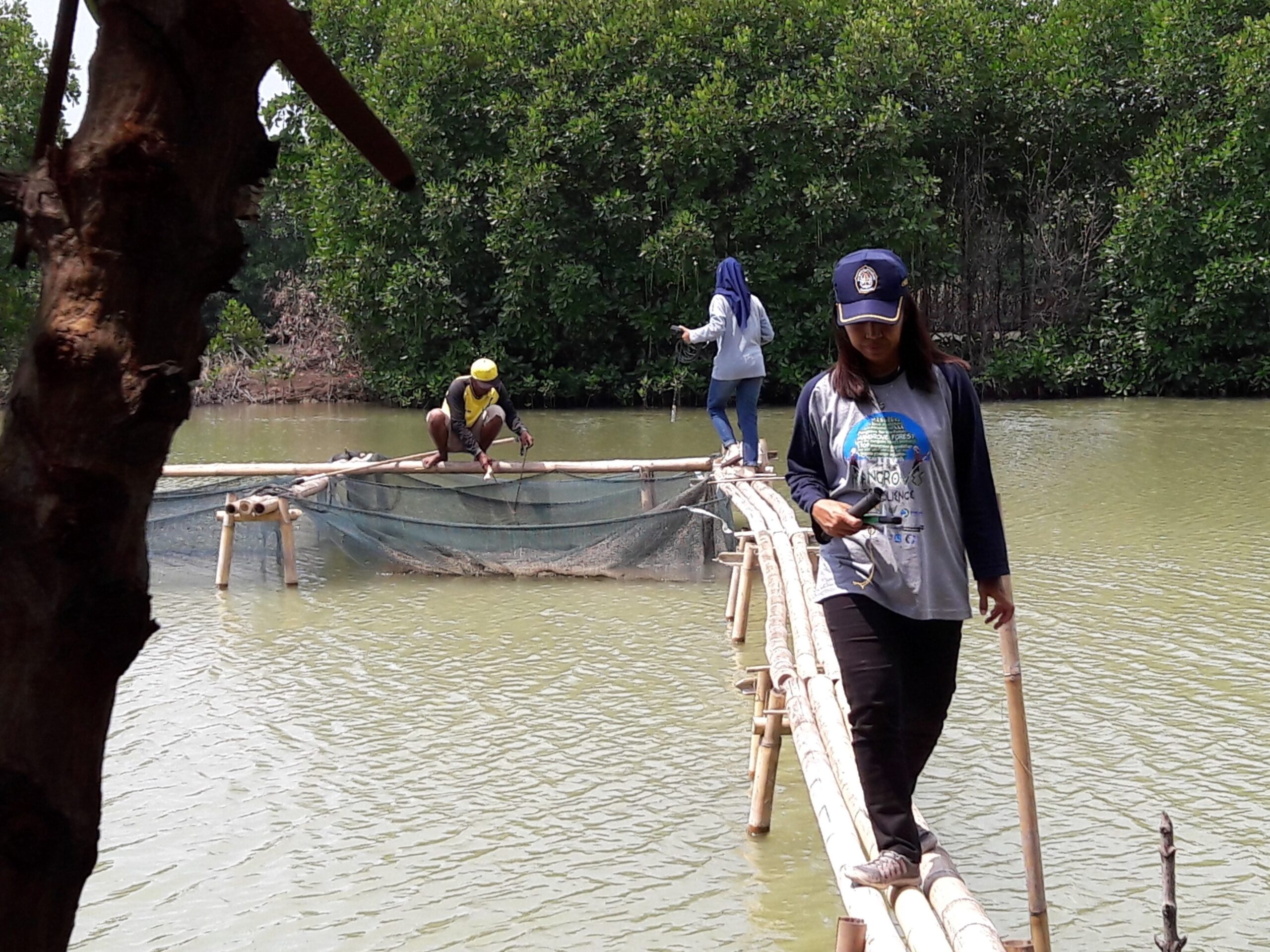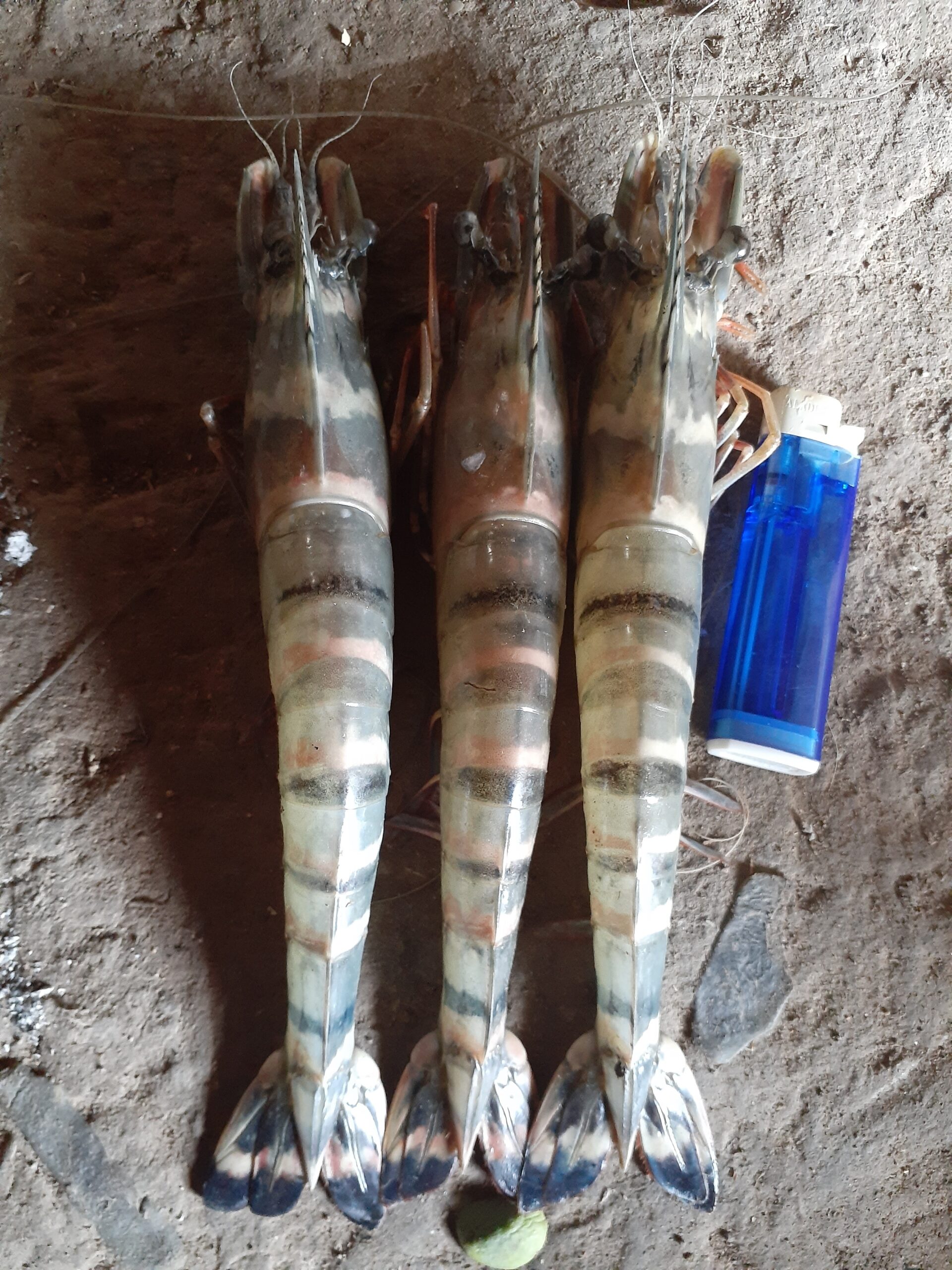Revitalisation of aquaculture ponds (Objective 2)
Initiation (aquaculture)
Decline in well-being of communities
Over the last decade, income from aquaculture has decreased by 60-80% and 25-50% for shrimp farmers and fishermen respectively as it collapsed in a few years’ time due to disease and pollution. As natural resources were destroyed for the creation of new ponds close to the coastline, fishermen are no longer able to sustainably exploit the marine environment. Therefore, besides technical measures, the project needs to invest in socio-economic measures to promote sustainable land-use including development and introduction of sustainable aquaculture and livelihoods diversification. These measures need to be rooted in community development plans, law and funding mechanisms and integral government master planning.
In the initiation phase of the project, a first overview of the organisation of the villages and aquacultures has been developed as well as an overview of local and district-level regulations. Possible alternatives were developed for addressing the low productivity in the aquaculture ponds.
Planning & Design (aquaculture)
The project develops and introduces sustainable aquaculture and livelihoods diversification (crab & shrimp farming). 10 community groups are supported through coastal (farmer) field schools and by providing resources (financial support) to initiate new aquaculture management practices and livelihood diversification. These improved practices aim to revitalize 300 ha of land for 300 households (based on a conservative estimate of 1 ha per household), and increasing average aquaculture productivity with 50%, by adjusting pond lay-out and management, by reducing fertilizer and pesticide inputs, by making optimal use of mangrove services like water purificationand by diversifying livelihoods activities. The measures will be controlled using community bylaws and will be rooted in community development plans and government master planning for sustainable development.
Altogether productivity of the ponds is expected to go up with at least 50% as a result. The project directly supports sustainable revitalization of 300 ha of aquaculture ponds along a 20 km shoreline.
Implementation (aquaculture)
The project directly supports sustainable revitalization of 300 ha of aquaculture ponds along a 20 km shoreline. A model was put into place for sustainable aquaculture that provides space for mangrove restoration and requires less use of chemicals, in order to enable vulnerable communities and economic sectors to prosper, to be more self-reliant and to increase their hazard resilience. The project develops and introduces sustainable aquaculture and livelihoods diversification (crab & mussels & shrimp farming).

trials in nets (photo by Roel Bosma)
In the project area, farmers in Demak are trained through Coastal Field Schools (CFS). This is an existing method, which the Building with Nature Consortium has adjusted with a focus on shrimp farming and mangrove belt recovery. Farmers learn critical adaptive thinking to develop, test and implement best practices such as generating farm inputs locally to reduce cost and in an ecologically sound way. The trained villagers pass on their insights through new trainings in other villages with the help of government programs.
Also the pond lay-out and management are adjusted to enhance water quality. The ponds will include a filter pond, and fertilizer and pesticide inputs will be decreased. Further, poly-culture systems is introduced, in which farmers stock multiple species which stimulates nutrient recycling, limits pollution and enhances resilience.
All communities have agreed to convert some ponds into mangroves to avoid further erosion, which shows their commitment towards a sustainable future and that they can be effectively engaged in coastal restoration and aquaculture revitalisation to safeguard their own future. The ponds are being relocated behind the restored mangrove belt, instead of right in front of the coast or directly bordering the rivers where they induce erosion. In this way the ponds can make optimal use of mangrove services like water purification
In total 10 community groups are supported through coastal field schools and by providing resources (financial support) to initiate new aquaculture management practices and livelihood diversification.
These improved practices directly revitalize 300 ha of land for 300 households, increasing average aquaculture productivity by adjusting pond lay-out and management, by reducing fertilizer and pesticide inputs, by making optimal use of mangrove services like water purification and by diversifying livelihoods activities.
The measures are rooted in community development plans and government master planning for sustainable development.
Best aquaculture practices introduced through Coastal Field Schools have been very successful and significantly increase aquaculture productivity and income. This boosts farmers’ support for the approach, already spurring them to convince others.
Operation and Maintenance (aquaculture)

(photo by Pak Maskur)
Farmers formally entered the Biorights program, and are implementing best aquaculture practices in no less than 422 hectare of ponds. The project leveraged the allocation of 70 ha of (degraded) ponds for rehabilitation into coastal and riverine mangrove. Although they may not all be suitable for mangrove recovery, it shows how communities start valuing mangroves.
The best aquaculture practices that were introduced to traditional farmers increased aquaculture productivity and tripled income, boosting farmers’ support and already spurring them to convince others.
- To make space for mangrove restoration, the project works with villagers to move ponds at the shoreline backwards. So far 70 hectares (degraded) aquaculture ponds have been allocated for rehabilitation into coastal and riverine mangrove as part of the biorights mechanism; hence communities are giving up land for mangrove restoration.
- The project introduced the innovative mixed mangrove-aquaculture system for the first time in Indonesia. In this system the aquaculture productivity is optimal, while the surrounding mangroves reduce the spread of disease agents, purify water and maintain their coastal safety and fisheries enhancement functions.
